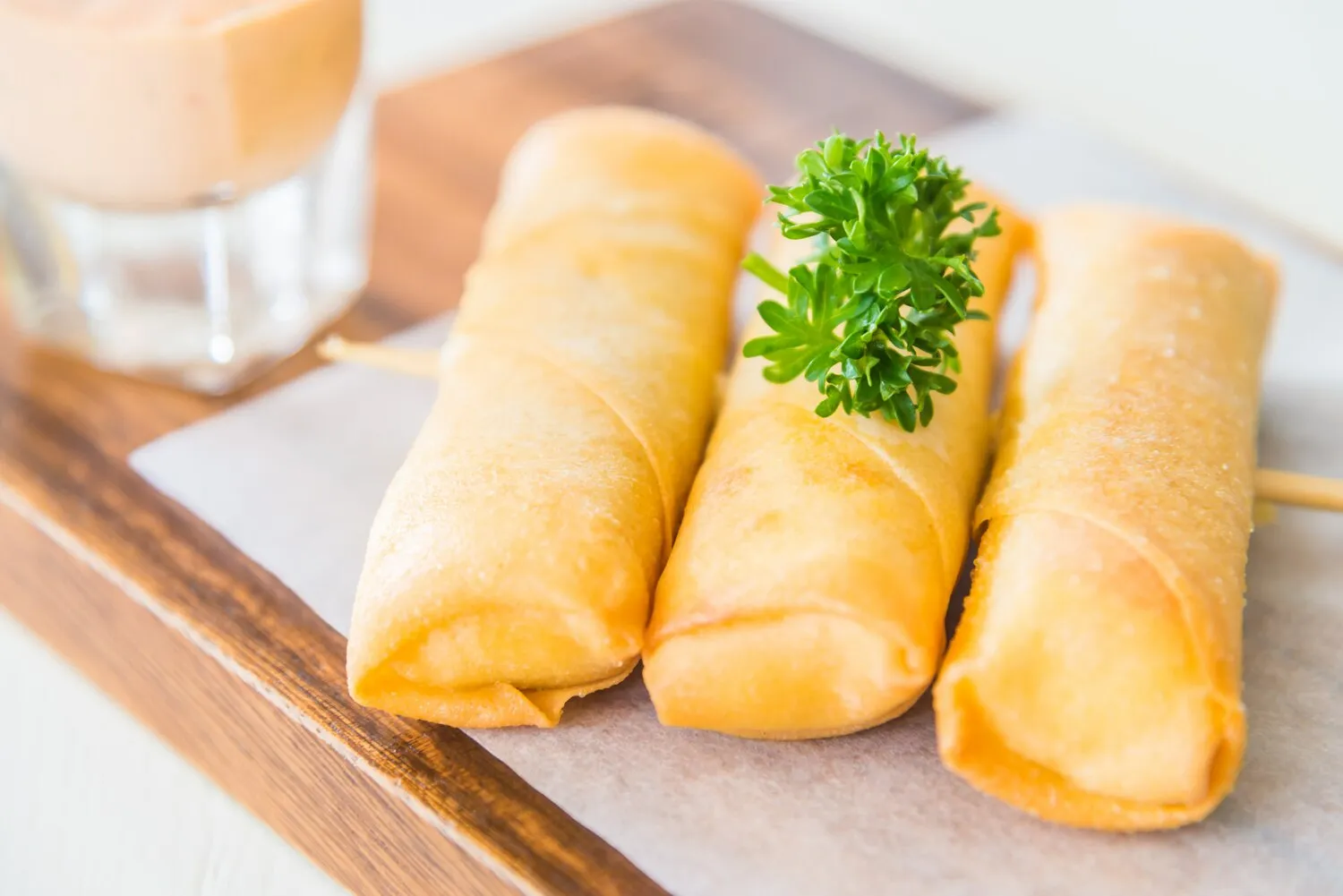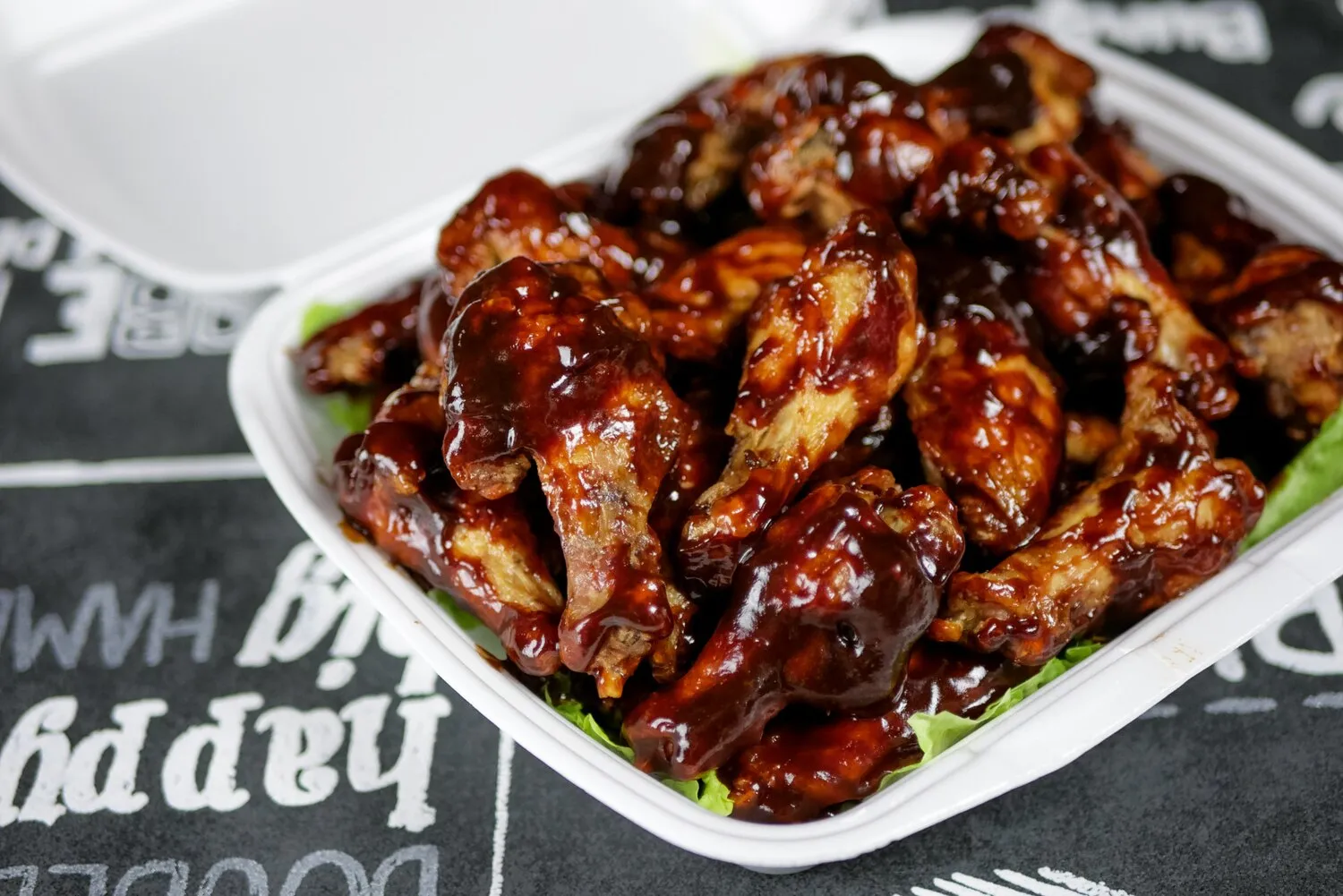
Spring Rolls
Deep-fried vegetarian spring rolls.
Nutrition Facts
* The % Daily Value (DV) tells you how much a nutrient in a serving of food contributes to a daily diet. 2,000 calories a day is used for general nutrition advice.
White Elephant Thai Cuisine at Chestermere Station
Spring rolls evolved from a simple pancake filled with seasonal spring vegetables eaten during the Spring Festival to celebrate the arrival of spring and a bountiful harvest. Over time, the fillings became more diverse, and the cooking methods evolved from simple wraps to fried variations, eventually spreading throughout Asia and beyond.
Spring rolls are deeply embedded in Chinese culture, particularly associated with celebrations and welcoming the new year. They symbolize wealth and prosperity due to their resemblance to gold bars. Their popularity has expanded beyond China, becoming a staple in many Asian cuisines and globally.
Spring Festival Symbolism
In China, spring rolls are traditionally eaten during the Spring Festival (Chinese New Year) as a symbol of wealth and good fortune. Their golden color represents gold bars, signifying prosperity in the coming year.
Regional Variations
While the core concept remains the same, spring rolls vary significantly across different regions of China and Asia. Fillings, wrappers, and dipping sauces differ based on local ingredients and culinary preferences.
Global Adaptation
Spring rolls have been adapted and modified around the world, incorporating local ingredients and flavors. This has led to a wide range of variations, reflecting diverse culinary influences.
Deep-fried vegetarian spring rolls offer a delightful combination of textures and flavors, from the crispy, golden-brown wrapper to the savory and fresh vegetable filling.
The dominant flavor profile is savory and umami, derived from ingredients like soy sauce, mushrooms, and vegetables. The freshness of the vegetables, often including cabbage, carrots, and bean sprouts, provides a light counterpoint to the richness of the fried wrapper. Ginger and garlic add aromatic complexity, while some recipes include a hint of sweetness from sugar or hoisin sauce. The dipping sauce, frequently a sweet chili sauce or plum sauce, contributes another layer of flavor – sweet, tangy, and spicy.
Preventing Soggy Rolls
To avoid soggy spring rolls, ensure the vegetable filling is not too wet. Squeeze out excess moisture from the vegetables before wrapping them.
Wrapping Technique
Wrap the spring rolls tightly to prevent oil from seeping into the filling during frying. Use a cornstarch slurry to seal the edges securely.
Frying Temperature
Maintain a consistent oil temperature of around 350°F (175°C) for even frying. Overcrowding the fryer will lower the temperature and result in soggy rolls.
Double Frying
For extra crispy spring rolls, consider double frying them. Fry them once at a slightly lower temperature to cook the filling, then fry them again at a higher temperature to achieve a golden-brown color and crispy texture.
Explore additional Appetizers dishes and restaurants
Explore AppetizersDiscover top dining spots and culinary experiences in Chestermere.
Explore ChestermereLearn more about the food culture, restaurant scene, and culinary heritage of Canada.
Explore Canada
